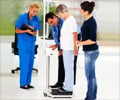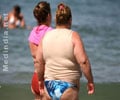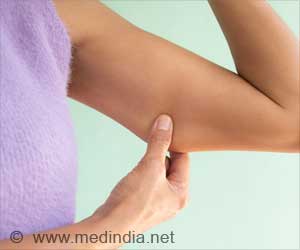People who are obese or overweight face a much higher risk of dying in a car collision compared with people of normal weight, say researchers in a recent study.

Transport safety scientists Thomas Rice of the University of California at Berkeley and Motao Zhu of the University of West Virginia delved into a US databank on road accidents, the Fatality Analysis Reporting System (FARS).
They dug out data from 1996 to 2008, covering more than 57,000 collisions that involved two cars. This was whittled down to cases in which both parties involved in the collision had been driving vehicles of similar size and types.
The team then compared the risk of fatality against the victim's estimated body mass index (BMI), a benchmark of fat, which is calculated by taking one's weight in kilogrammes and dividing it by one's height in metres squared.
An adult with a BMI of between 18.5 and 24.9 is considered of normal weight. Below this is considered underweight. Between 25.0 and 29.9 is considered overweight; and 30.0 or above is obese.
The researchers found an increase in risk of 19 percent for underweight drivers compared with counterparts of normal weight.
Advertisement
Obese women were at even greater risk. Among those in the 35-39.9 BMI category, the risk of death was double compared with people of normal weight.
Advertisement
Further work is needed to explain the big differences, but the researchers noted that obese people suffer different injuries from normal-weight individuals in car accidents.
Data from intensive-care units say that obese patients tend to have more chest injuries and fewer head injuries, are likelier to have more complications, require longer hospital stays -- and are likelier to die of their injuries.
Another question is whether obese people properly use their seat belt, rather than leave it unbuckled or partially fastened because it is uncomfortable -- and whether safety designs in cars are flawed.
Crash tests, conducted with cadavers, found that in a frontal collision, people of normal weight lurched forward slightly before the seat belt engaged the pelvis bone to prevent further movement, says the study.
But obese cadavers moved substantially forward from the seat, especially in the lower body. This was because abdominal fat acted as a spongy padding, slowing the time it took for the belt to tighten across the lap.
"The ability of passenger vehicles to protect overweight or obese occupants may have increasing important public health occupations," says the study, published in the Emergency Medicine Journal.
In the United States, "currently more than 33 percent of adult men and 35 percent of adult women are obese," the paper notes.
"It may be the case that passenger vehicles are well designed to protect normal-weight vehicle occupants but are deficient in protecting overweight or obese patients."
The final dataset used in the study entailed 3,403 pairs of drivers for whom data on weight, age, seat belt use and airbag deployment were available.
Almost half of these drivers were of normal weight; one in three was overweight; and almost one in five (18 percent) was obese.
Source-AFP













